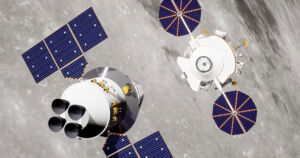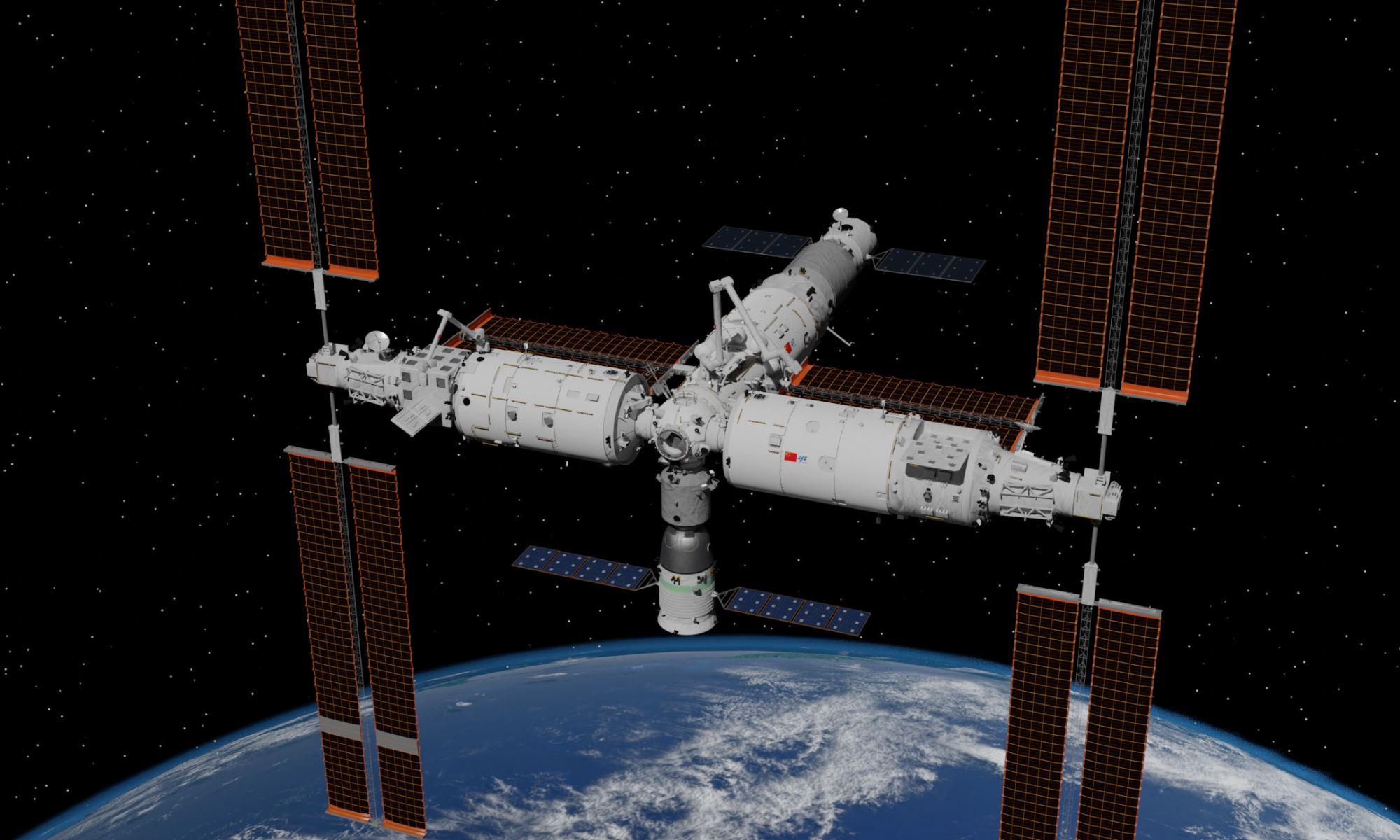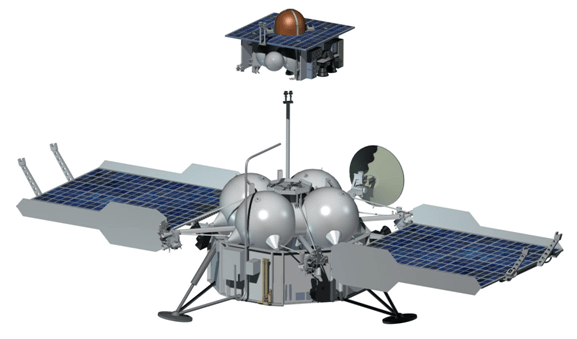In a recent announcement, the Chinese Space Agency (CSA) unveiled the names for its forthcoming lunar mission components. The CSA have been working towards sending humans to the Moon through a series of robotic missions. The 22-tonne capsule that is taking the astronauts to the Moon is called Mengzhuo (translates to ‘dream vessel’) and the lander has been named Lanyue (meaning ‘embracing the Moon’). Assuming all goes to plan, they will send two humans and a rover to the surface of the Moon by 2030.
Continue reading “China Names its Capsule and Lander for its Upcoming Human Lunar Missions”Three New Astronauts Arrive at the Chinese Space Station, Including the Country's First Civilian
China continues to establish new milestones in space. In recent years, the China National Space Agency (CNSA) has begun assembling the Long March-9 (CZ-9), the country’s first reusable super-heavy launch vehicle; the Tianwen-1 mission became the first Chinese orbiter, lander, and rover combination to reach Mars, and their super-secret spaceplane completed its second flight (after spending 276 days in space). China has also made significant progress in terms of human spaceflight, especially where the Tiangong space station is concerned.
Earlier this week (Tues. May 30th), the China Manned Space Agency (CMSA) took another major step when it launched the country’s sixteenth mission (Shenzou-16) to Tiangong atop a Long March-2F (CZ-2F) rocket. This mission delivered three taikonauts to the space station and performed the most complicated docking maneuver ever attempted. The mission highlights included successfully testing the Shenzou’s upgraded instruments and systems, which allowed the spacecraft to autonomously rendezvous with the station under less-than-ideal conditions.
Continue reading “Three New Astronauts Arrive at the Chinese Space Station, Including the Country's First Civilian”China Launches Mengtian, the Last Major Module to its Space Station
On the afternoon of Monday, October 31st, 2022 (Halloween!), China launched the Mengtian laboratory cabin module into space, where it will join the Tiangong modular space station. This module, whose name translates to “Dreaming of the Heavens,” is the second laboratory and final addition to Tiangong (“Palace in the Sky”). This successful launch places China one step closer to completing its first long-term space station, roughly one-fifth the mass of the International Space Station (ISS) and comparable in size to Russia’s decommissioned Mir space station.
Continue reading “China Launches Mengtian, the Last Major Module to its Space Station”China’s Chang’e-3 Moon Rover Descends to Lower Orbit Sets Up Historic Soft Landing
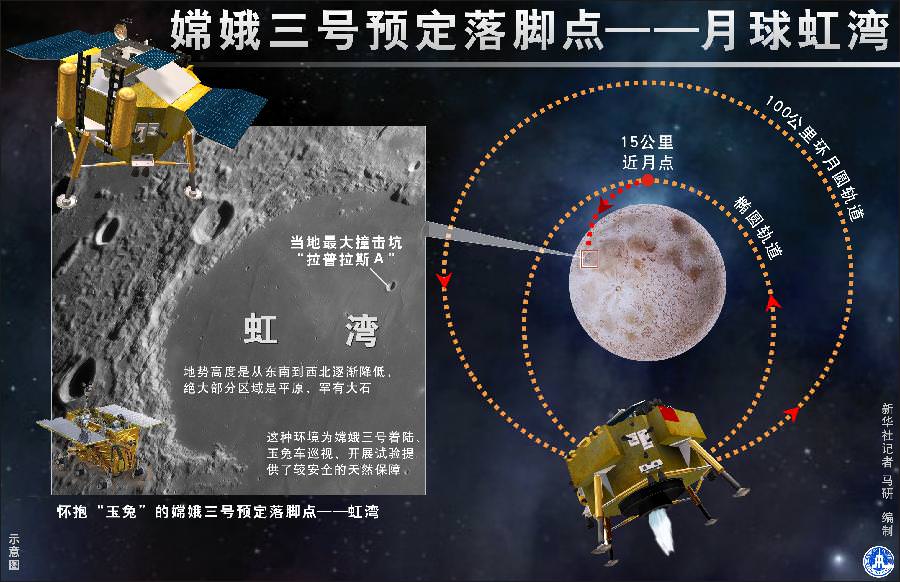
All systems appear to be “GO” for the world’s first attempt to soft land a space probe on the Moon in nearly four decades.
China’s maiden moon landing probe – Chang’e-3 – is slated to attempt the history making landing this weekend on a lava plain in the Bay of Rainbows, or Sinus Iridum region.
Chinese space engineers at the Beijing Aerospace Control Center (BACC) paved the way for the historic touchdown by successfully commanding Chang’e-3 to descend from the 100 km-high lunar circular orbit it reached just one week ago on Dec. 6, to “an elliptical orbit with its nearest point about 15 km away from the moon’s surface”, according to a statement from China’s State Administration of Science, Technology and Industry for National Defense (SASTIND).
UPDATE: CCTV is providing live landing coverage
The first pictures taken from the alien lunar surface in some 37 years are expected to be transmitted within days or hours of touchdown planned as early as Saturday, Dec. 14, at 9:40 p.m. Beijing local time, 8:40 a.m. EST.
CCTV, China’s state run network, carried the launch live. It remains to be seen whether they will have live coverage of the landing since there have been no programming announcements.
SASTIND said the orbit lowering thruster firing was “conducted above the dark side of the moon at 9:20 p.m.” on Dec. 10, Beijing local time.
Confirmation of the Chang’e-3 probes new, lower orbit was received four minutes later.
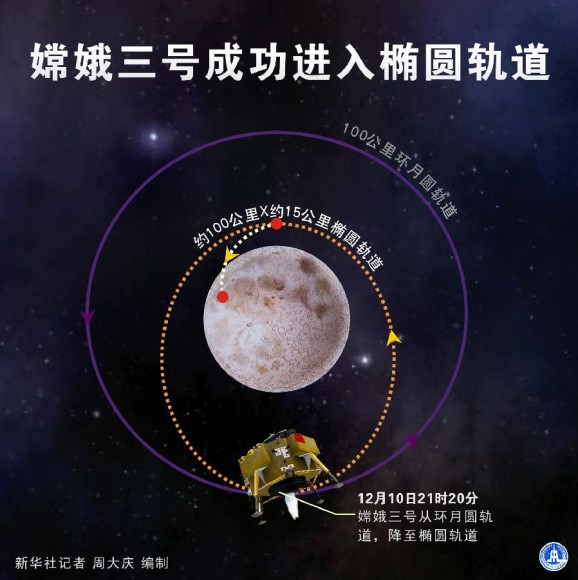
If successful, the Chang’e-3 mission will mark the first soft landing on the Moon since the Soviet Union’s unmanned Luna 24 sample return vehicle landed back in 1976.
China would join an elite club of three, including the United States, who have mastered the critical technology to successfully touch down on Earth’s nearest neighbor.
The Chang’e-3 mission is comprised of China’s ‘Yutu’ lunar lander riding piggyback atop a much larger four legged landing probe.
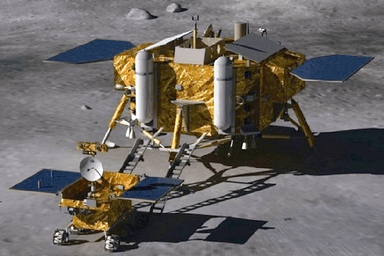
The voyage from the Earth to the Moon began 12 days ago with the flawless launch of Chang’e-3 atop China’s Long March 3-B booster at 1:30 a.m. Beijing local time, Dec. 2, 2013 (12:30 p.m. EST, Dec. 1) from the Xichang Satellite Launch Center, in southwest China.
Chang’e-3 will make a powered descent to the Moon’s surface on Dec. 14 by firing the landing thrusters at the altitude of 15 km (9 mi) for a soft landing in a preselected area on the Bay of Rainbows.
The powered descent will take about 12 minutes.
The variable thrust engine can continuously vary its thrust power between 1,500 to 7,500 newtons, according to Xinhua.
The Bay of Rainbows is located in the upper left portion of the moon as seen from Earth. It was imaged in high resolution by China’s prior lunar mission – the Chang’e-2 lunar orbiter.
The 1200 kg lander is equipped with terrain recognition equipment and software to avoid rock and boulder fields that could spell catastrophe even in the final seconds before touchdown if the vehicle were to land directly on top of them.
Chang’e-3 is powered by a combination of solar arrays and a nuclear device in order to survive the two week long lunar nights.
The six-wheeled ‘Yutu’ rover, with a rocker bogie suspension, will be lowered in stages to the moon’s surface in a complex operation and then drive off a pair of landing ramps to explore the moon’s terrain.
Yutu measures 150 centimeters high and weighs approximately 120 kilograms and sports a robotic arm equipped with science instruments.
The rover and lander are equipped with multiple cameras, spectrometers, an optical telescope, ground penetrating radar and other sensors to investigate the lunar surface and composition.
The radar instrument installed at the bottom of the rover can penetrate 100 meters deep below the surface to study the Moon’s structure and composition in unprecedented detail.
China’s Chang’e-3 probe joins NASA’s newly arrived LADEE lunar probe which entered lunar orbit on Oct. 6 following a spectacular night time blastoff from NASA’s Wallops Flight Facility in Virginia.
Stay tuned here for Ken’s continuing Chang’e-3, LADEE, MAVEN, MOM, Mars rover and more news.
Daring Russian Sample Return mission to Martian Moon Phobos aims for November Liftoff
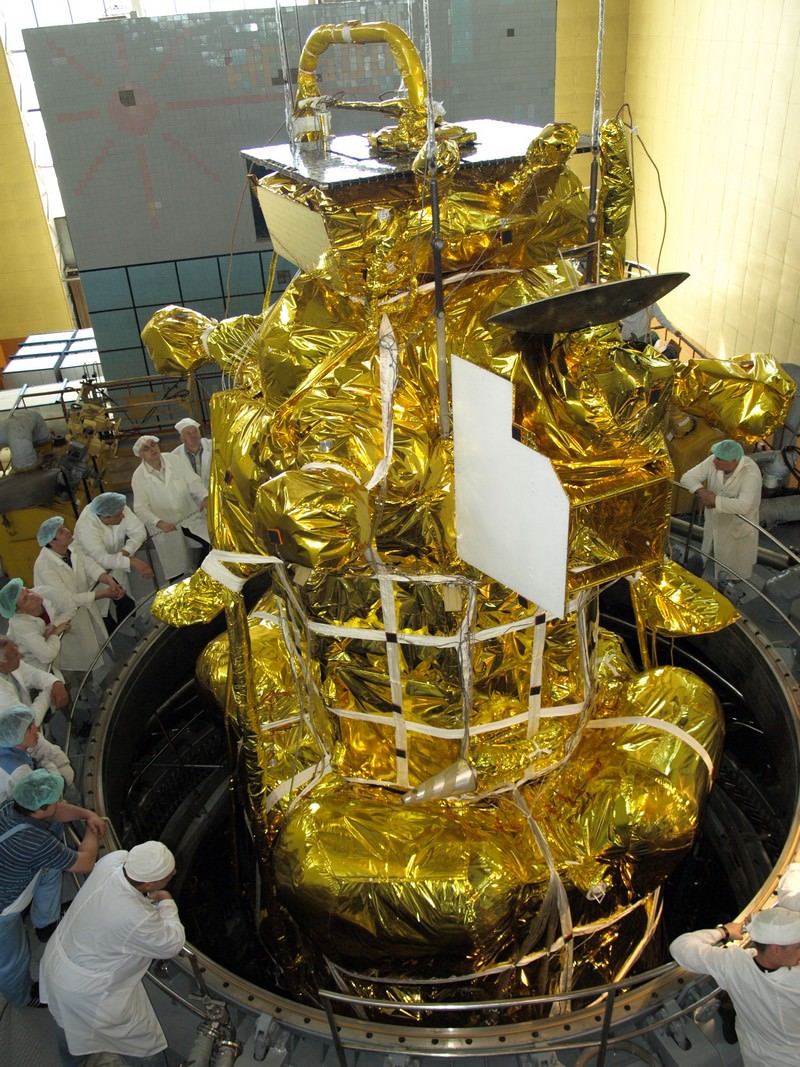
[/caption]
In just over 3 weeks’ time, Russia plans to launch a bold mission to Mars whose objective, if successful , is to land on the Martian Moon Phobos and return a cargo of precious soil samples back to Earth about three years later.
The purpose is to determine the origin and evolution of Phobos and how that relates to Mars and the evolution of the solar system.
Liftoff of the Phobos-Grunt space probe will end a nearly two decade long hiatus in Russia’s exploration of the Red Planet following the failed Mars 96 mission and is currently scheduled to head to space just weeks prior to this year’s other Mars mission – namely NASA’s next Mars rover, the Curiosity Mars Science Laboratory (MSL).
Blastoff of Phobos-Grunt may come as early as around Nov. 5 to Nov. 8 atop a Russian Zenit 3-F rocket from the Baikonur Cosmodrome in Kazakhstan. The launch window extends until about Nov. 25. Elements of the spacecraft are undergoing final prelaunch testing at Baikonur.
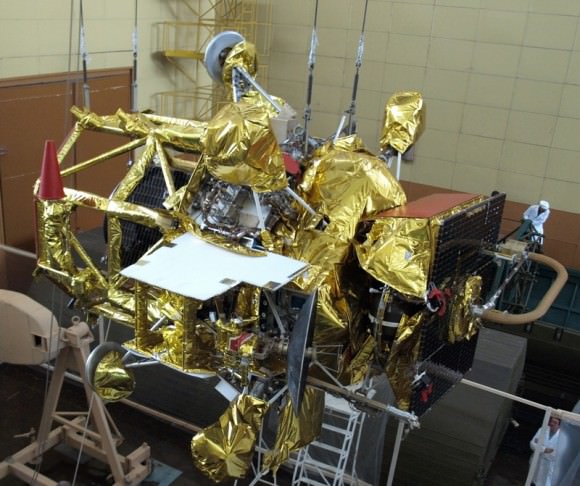
Baikonur is the same location from which Russian manned Soyuz rockets lift off for the International Space Station. Just like NASA’s Curiosity Mars rover, the mission was originally intended for a 2009 launch but was prudently delayed to fix a number of technical problems.
“November will see the launch of the Phobos-Grunt interplanetary automatic research station aimed at delivering samples of the Martian natural satellite’s soil to Earth’” said Vladimir Popovkin, head of the Russian Federal Space Agency, speaking recently at a session of the State Duma according to the Voice of Russia, a Russian government news agency.
The spacecraft will reach the vicinity of Mars after an 11 month interplanetary cruise around October 2012. Following several months of orbital science investigations of Mars and its two moons and searching for a safe landing site, Phobos-Grunt will attempt history’s first ever touchdown on Phobos. It will conduct a comprehensive analysis of the surface of the tiny moon and collect up to 200 grams of soil and rocks with a robotic arm and drill.
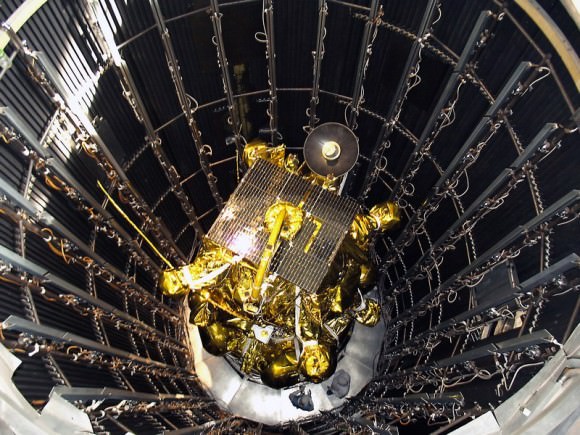
After about a year of surface operations, the loaded return vehicle will blast off from Phobos and arrive back at Earth around August 2014. These would be the first macroscopic samples returned from another body in the solar system since Russia’s Luna 24 in 1976.
“The way back will take between nine and 11 months, after which the return capsule will enter Earth’s atmosphere at a speed of 12 kilometers per second. The capsule has neither parachute nor radio communication and will break its speed thanks to its conical shape,” said chief spacecraft constructor Maksim Martynov according to a report from the Russia Today news agency. He added that there are two soil collection manipulators on the lander because of uncertainties in the characteristics of Phobos soil.
Phobos-Grunt was built by NPO Lavochkin and consists of a cruise stage, orbiter/lander, ascent vehicle, and Earth return vehicle.
The spacecraft weighs nearly 12,000 kg and is equipped with a sophisticated 50 kg international science payload, in particular from France and CNES, the French Space Agency.
Also tucked aboard is the Yinghou-1 microsatellite supplied by China. The 110 kg Yinghou-1 is China’s first probe to launch to Mars and will study the Red Planet’s magnetic and gravity fields and surface environment from orbit for about 1 year.
“It will be the first time such research [at Mars] will be done by two spacecraft simultaneously. The research will help understand how the erosion of Mars’ atmosphere happens,” said Professor Lev Zelyony from the Space Research Institute of the Russian Academy of Science, according to Russia Today.
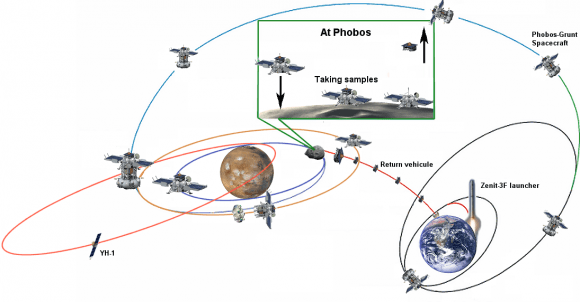
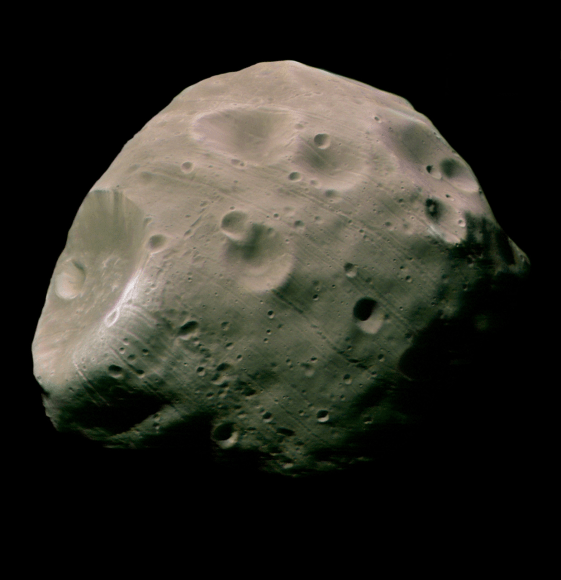
Read Ken’s continuing features about Phobos-Grunt, Curiosity and Opportunity starting here:
Assembling Curiosity’s Rocket to Mars
Encapsulating Curiosity for Martian Flight Test
Dramatic New NASA Animation Depicts Next Mars Rover in Action
Opportunity spotted Exploring vast Endeavour Crater from Mars Orbit
Twin Towers 9/11 Tribute by Opportunity Mars Rover
NASA Robot arrives at ‘New’ Landing Site holding Clues to Ancient Water Flow on Mars
Opportunity Arrives at Huge Martian Crater with Superb Science and Scenic Outlook
Opportunity Snaps Gorgeous Vistas nearing the Foothills of Giant Endeavour Crater
Opportunity Rover Heads for Spirit Point to Honor Dead Martian Sister; Science Team Tributes

